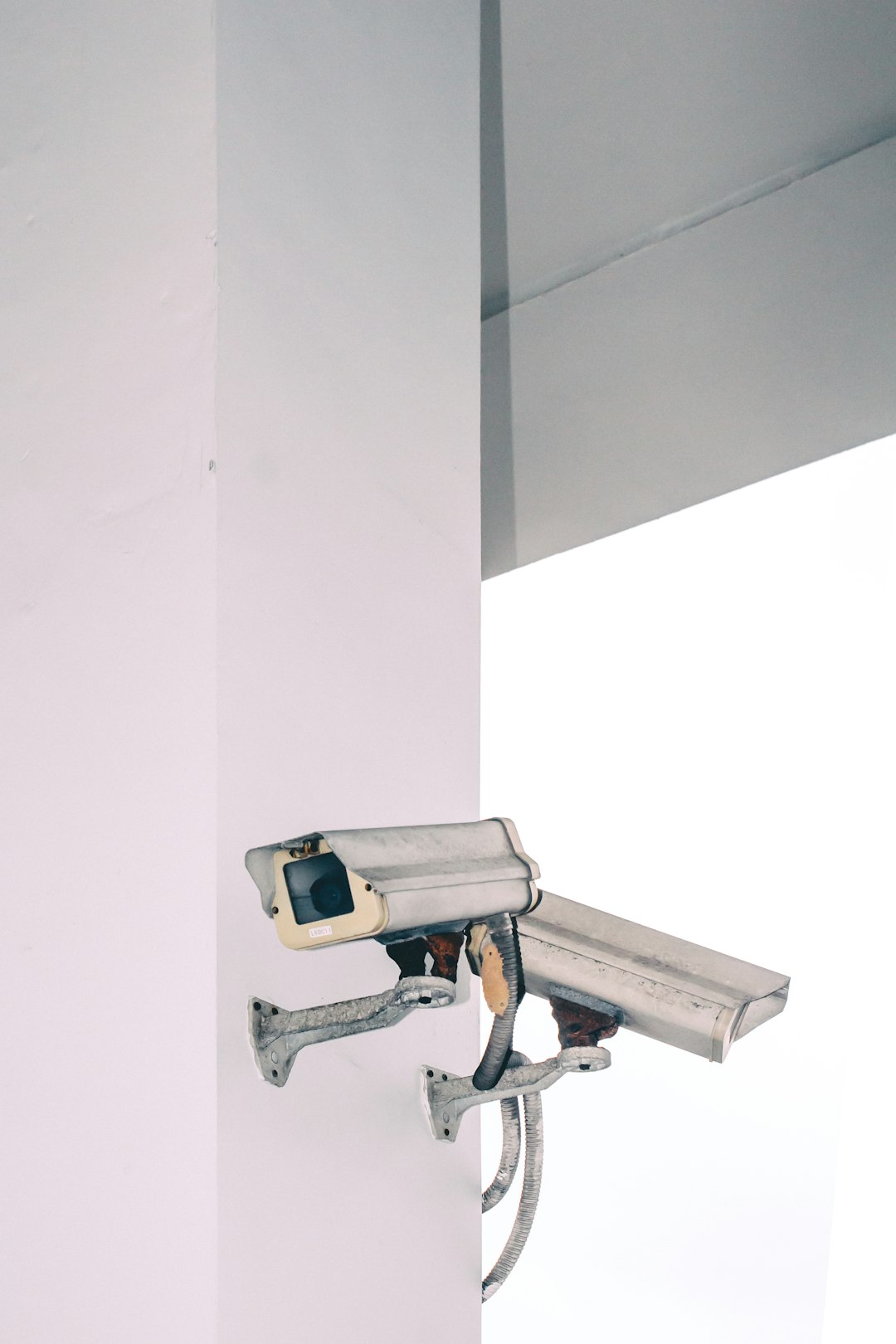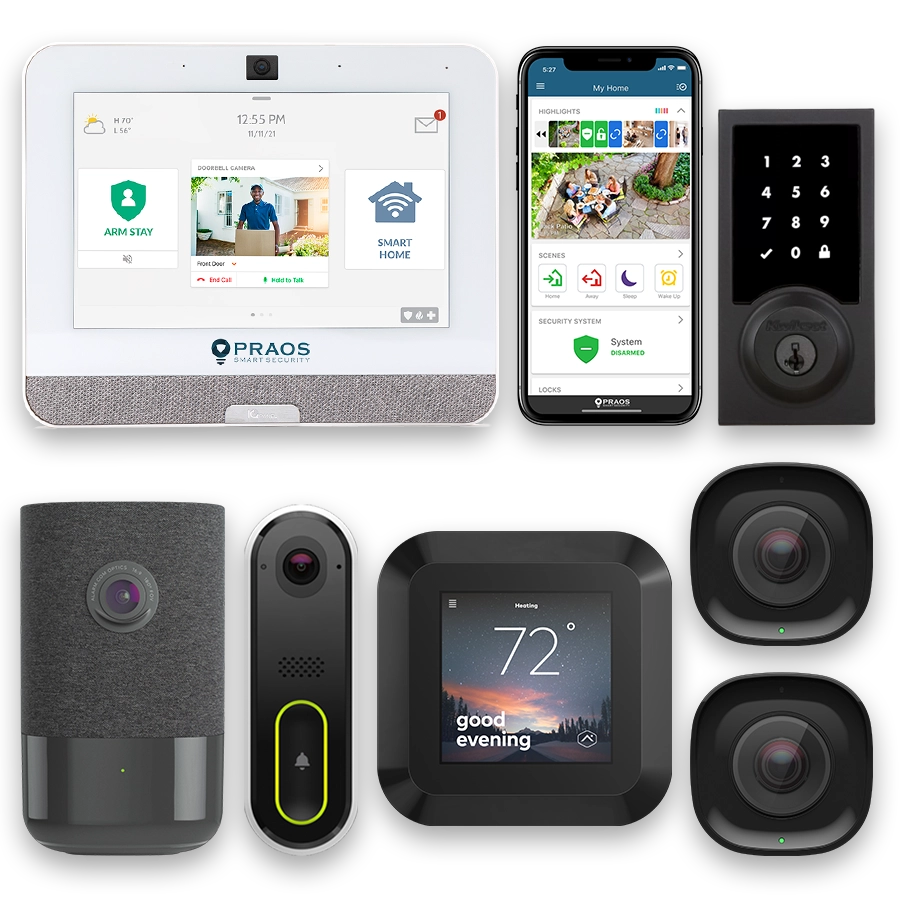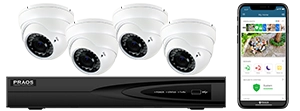Introduction to Business Security: Historical Context and Modern Needs
Business security has undergone significant evolution over the past century, responding to both technological advancements and changing business practices. Understanding this evolution provides valuable insights into modern needs and solutions for protecting business premises.
In the early 20th century, business security primarily relied on physical measures such as locks, safes, and mechanical alarm systems. These methods offered basic protection but were limited in their effectiveness, especially against sophisticated break-in techniques. Security personnel played a crucial role, patrolling premises and monitoring for suspicious activity.
With the advent of electronic systems in the mid-20th century, business security experienced a substantial transformation. Innovations such as electric alarms, access control systems, and intercoms enhanced the ability to deter and detect unauthorized access. During this period, Closed-Circuit Television (CCTV) emerged, providing businesses with the ability to continuously monitor and record activities within their premises.
The late 20th century saw the integration of digital technology into security systems. The introduction of computer-based controls and digital surveillance cameras greatly improved the quality and capability of security measures. Internet Protocol (IP) cameras and advanced recording technologies enabled remote monitoring and more efficient data storage, further bolstering security efforts.
In recent years, the rise of the Internet of Things (IoT) has ushered in a new era for business security. Smart locks, which utilize wireless communication technologies such as Bluetooth, Wi-Fi, and Zigbee, have gained popularity due to their convenience and enhanced security features. These locks can be managed remotely and integrated with other smart devices, providing a robust solution for access control.
Simultaneously, modern surveillance systems have benefited from advancements in high-resolution imaging, artificial intelligence, and machine learning. These technologies enable real-time analysis and recognition of potential threats, improving the overall effectiveness of security protocols.
The dynamic and complex nature of today’s business environment necessitates advanced security solutions that can provide comprehensive protection. Combining smart locks with advanced surveillance technologies addresses the need for securing physical premises while also offering flexibility and ease of management.
The continuous development and integration of these technologies signify an ongoing commitment to enhancing business security. This historical context sets the stage for a deeper exploration of the specific advancements in smart locks and surveillance systems, their integration, and the impact on modern business security practices.
The Development of Smart Lock Technologies
The development of smart lock technologies has significantly transformed the landscape of business security. Smart locks, which operate without traditional keys, utilize various forms of electronic control to manage access. These technologies emerged out of the need for more secure, efficient, and flexible security solutions, particularly in commercial environments.
Early Innovations
Early generations of smart locks began with simple keypad systems. These locks required users to enter a numerical code to gain access. While these early models laid the groundwork for future advancements, they were vulnerable to code cracking and unauthorized access if a code was shared or intercepted.
Integration of Bluetooth and Wi-Fi
The introduction of Bluetooth and Wi-Fi technologies marked a significant step forward in smart lock development. Bluetooth-enabled locks allow for proximity-based access, automatically unlocking when an authorized user’s smartphone or Bluetooth device is within range. Wi-Fi enabled locks, on the other hand, provide remote access capabilities, enabling users to control the locks from virtually anywhere via an internet connection.
Biometric and Multifactor Authentication
Recent advancements have seen the incorporation of biometric authentication methods, such as fingerprint scanners and facial recognition, into smart locks. These methods offer robust security advantages due to their reliance on unique biological characteristics, making unauthorized access considerably more difficult. Additionally, multifactor authentication (MFA) systems have been integrated into smart locks, requiring two or more verification methods—such as a password combined with a biometric check—before granting access.
Smartphone Integration and Mobile Apps
Smart lock technologies have also greatly benefited from the proliferation of smartphones and mobile applications. Many smart locks now have dedicated mobile apps that allow business owners to monitor and control access in real time. These apps often include features such as instant notifications of lock activity, access logs, and the ability to issue or revoke digital keys to employees and visitors.
Cloud-based Management
To further enhance functionality, many smart locks now support cloud-based management systems. These systems provide centralized control over numerous smart locks across multiple locations. This is particularly valuable for businesses with expansive or multi-site operations, offering streamlined management and the ability to analyze access patterns to enhance security protocols.
Integration with Other Smart Systems
Another significant development in smart lock technology is its integration with other smart systems used in modern buildings, such as lighting, heating, and security. For example, integrated systems can automatically adjust a building’s security and environmental settings based on access activity, optimizing both security and energy efficiency. Such integration is part of the broader trend towards smart building ecosystems.
- Early smart locks with keypads.
- Bluetooth and Wi-Fi enabled locks.
- Biometric authentication integration.
- Smartphone apps and remote management.
- Cloud-based management systems.
- Integration with other smart systems.
Overall, the development of smart lock technologies has provided business owners with more secure, agile, and integrated solutions for controlling access to their premises. As technology continues to advance, smart locks will likely play an increasingly vital role in the broader ecosystem of business security solutions.
Advancements in Surveillance Systems
Surveillance systems have undergone significant advancements in recent years, driven by technological innovation and the increasing need for robust security measures. Modern surveillance technologies offer enhanced capabilities compared to their predecessors, providing business owners with powerful tools to monitor and protect their premises.
One of the most notable developments in surveillance systems is the transition from analog to digital. Analog systems, which were prevalent in the past, have largely been replaced by Internet Protocol (IP) cameras. IP cameras offer several advantages, including higher resolution images, remote accessibility, and integration with other digital systems. High-definition (HD) and ultra-high-definition (UHD) cameras now provide much clearer and more detailed images, aiding in the accurate identification of individuals and incidents.
Another significant advancement is the incorporation of artificial intelligence (AI) and machine learning (ML) into surveillance systems. AI-powered cameras can perform functions such as facial recognition, license plate reading, and behavioral analysis. These features enhance the ability to detect and respond to potential threats proactively. For instance, AI can analyze video feeds to identify unusual patterns or activities, alerting security personnel in real-time.
Moreover, the advent of cloud-based surveillance has revolutionized how video data is stored and accessed. Cloud storage solutions enable businesses to store vast amounts of footage securely without the need for extensive on-site hardware. This approach also facilitates easy retrieval and sharing of footage, especially during investigations or evidence submission processes.
The table below highlights some key advancements in modern surveillance systems:
| Feature | Description |
|---|---|
| IP Cameras | High-resolution digital cameras accessible remotely and capable of integrating with other digital systems. |
| AI & Machine Learning | Technologies enabling facial recognition, license plate reading, and predictive analysis to identify potential threats. |
| Cloud-Based Storage | Secure and scalable storage solutions that simplify data retrieval and reduce hardware requirements. |
Additionally, advancements in mobility and connectivity have further enhanced surveillance capabilities. Mobile surveillance solutions, such as body-worn cameras and mobile apps, provide real-time monitoring and recording through connected devices. These portable tools are particularly useful for security personnel patrolling large facilities or during events.
Integration with other smart technologies, such as access control systems and environmental sensors, represents another significant evolution in the surveillance landscape. Such integration enables comprehensive security ecosystems where various components work together to provide layered protection. For example, a security breach detected by a surveillance camera can automatically trigger door locks or send alerts to the monitoring center.
Overall, the advancements in surveillance technologies have significantly bolstered the ability of businesses to safeguard their operations. By adopting modern surveillance systems, businesses can enhance their situational awareness, respond more effectively to incidents, and ultimately provide a safer environment for employees and customers.
Integration of Smart Locks and Surveillance Technologies
The integration of smart locks and surveillance technologies represents a significant advancement in the field of business security. As these technologies continue to evolve, their combined use creates a more comprehensive security strategy for businesses, leveraging their respective strengths to mitigate risks more effectively.
Smart locks offer businesses enhanced control over access management. These digital devices allow for customizable entry permissions, timestamped access logs, and remote operation. By combining these features with the robust capabilities of modern surveillance systems, businesses can achieve a higher level of security oversight. Surveillance systems, particularly those with high-resolution cameras and real-time monitoring capabilities, provide critical visual and analytical data that supplements the information gathered by smart locks.
One of the primary benefits of integrating these technologies is the ability to create a synchronized security ecosystem. For instance, when a smart lock is engaged or triggered, it can automatically prompt the surveillance system to record or alert security personnel. This immediate response can deter potential intruders and provide timely evidence in case of security breaches.
Moreover, integration allows for centralized control and monitoring, which simplifies the management of security protocols. Instead of managing multiple separate systems, businesses can utilize integrated platforms that present a unified interface for both smart locks and surveillance feeds. This centralization not only enhances operational efficiency but also reduces the likelihood of overlooked security events due to fragmented systems.
Data analytics play a crucial role in this integration. Advanced surveillance systems often come equipped with artificial intelligence and machine learning algorithms that can analyze video feeds in real-time to detect unusual activities or patterns. When this capability is linked with smart lock data, it provides a more holistic view of the security landscape. For example, if a smart lock detects multiple failed access attempts, the system can automatically cross-reference this with surveillance footage, detecting potential tampering or unauthorized access attempts.
Additionally, remote access and mobile notifications extend the reach and responsiveness of business security measures. Security managers can receive instant alerts on their mobile devices regarding suspicious activities detected by either smart locks or surveillance systems. This immediate alert system ensures rapid response times, potentially thwarting security incidents before they escalate.
Furthermore, the integration supports compliance with various regulatory requirements by ensuring that access control and surveillance data are accurately recorded and retained. This is particularly important for businesses operating in sectors with stringent security and privacy regulations. Accurate documentation and the ability to produce detailed access and surveillance reports can aid in regulatory audits and investigations.
Overall, the integration of smart locks and surveillance technologies signifies a paradigm shift in business security, ushering in an era of enhanced protection through technological synergy. The multifaceted benefits of this integration underscore its importance for businesses aiming to safeguard their assets, personnel, and information in an increasingly complex threat landscape.
Case Studies of Successful Implementations
Business security has significantly advanced over the years, and the combination of smart locks and surveillance technologies has proven to be an effective strategy for enhanced protection. Numerous real-world implementations highlight the success and benefits of integrating these modern security technologies.
One notable implementation is by Hollister Incorporated, a healthcare manufacturing company that adopted an advanced security system integrating smart locks and surveillance cameras. The company installed over 200 electronic locks and 100 surveillance cameras managed from a centralized security operation center. This overhaul reportedly improved access control and provided real-time monitoring capabilities, leading to a more secure and organized environment.
In another instance, the New Jersey Institute of Technology (NJIT) enhanced their campus security by integrating smart locks with existing surveillance systems. By replacing traditional locks with intelligent electronic ones, NJIT was able to automate access control and manage entry permissions more effectively. Coupled with high-definition surveillance cameras, this integration allowed for immediate response to unauthorized access or suspicious activities.
Retailers have also seen substantial benefits. Best Buy Co., Inc., a multinational electronics retailer, implemented a robust security system across its stores that combines smart locking mechanisms with advanced video surveillance. This has led to a notable decline in theft and fraud. By controlling and monitoring every door and entrance in their stores, Best Buy was able to improve overall security and gain valuable insights into customer behavior within the premises.
Restaurants like McDonald’s have also adopted these integrated security measures. In various locations, McDonald’s installed smart locks on their store rooms and combined them with surveillance cameras to monitor and manage access to sensitive areas. This system not only enhanced security but also streamlined the operational efficiency of their staff by reducing the instances of lost keys and unauthorized entry.
Financial institutions exemplify another sector where the combined use of smart locks and surveillance technologies has enhanced security measures. Bank of America, for instance, integrated biometric smart locks and advanced video surveillance to safeguard their branches and ATMs. The primary goal was to enhance the security of their facilities and protect sensitive customer information. This multi-layered approach has significantly fortified their defense against unauthorized access and potential security breaches.
These real-world examples underscore the effectiveness and necessity of utilizing both smart locks and surveillance technologies in conjunction. They not only enhance security but also provide increased convenience and operational efficiency, ultimately leading to a more protected business environment.
Challenges and Considerations in Combining Technologies
Combining smart locks and surveillance technologies for business security presents several challenges and considerations that are crucial for successful implementation and operation.
Cost and Budget Constraints
Investing in advanced security technologies can be financially demanding. Businesses, particularly small and medium-sized enterprises (SMEs), may face budget constraints that limit their ability to invest in comprehensive security systems. According to the National Small Business Association (NSBA), only 23% of small businesses can afford to spend more than $1,000 on security. This financial limitation necessitates a strategic approach to balance affordability with the effectiveness of security solutions.
Compatibility Issues
Ensuring seamless integration between different security systems is essential. Various manufacturers often use proprietary technology, which can create compatibility issues. For example, a 2021 survey by IFSEC Global found that 62% of security professionals grapple with integration challenges. These compatibility issues can lead to additional costs and delays, complicating the deployment process.
Data Security Risks
The integration of smart locks and surveillance technologies often involves collecting and managing vast amounts of sensitive data. This data must be protected against breaches and unauthorized access. The 2022 Norton Cyber Safety Insights Report indicated that 60% of businesses experienced some form of data breach in the preceding year. Companies must implement robust encryption standards and continually update their security protocols to mitigate these risks.
User Training and Compliance
Effective use of advanced security technologies requires proper training for users. Employees must understand how to operate smart locks and surveillance systems, respond to security alerts, and comply with security protocols. Misuse or lack of knowledge can lead to security vulnerabilities. Training programs should be regularly updated to reflect the latest technologies and security practices.
Maintenance and Technical Support
Both smart locks and surveillance systems require ongoing maintenance and support. Components of these systems may need firmware updates, repairs, and troubleshooting. Uninterrupted functionality is critical, and any technical issues must be addressed promptly to avoid security lapses. Organizations must plan for continuous maintenance support either internally or through third party providers.
Privacy Concerns
The use of surveillance systems raises privacy concerns that must be managed carefully. Businesses need to balance security needs with employee and customer privacy rights. Clear policies about surveillance practices should be communicated transparently. According to a study by the American Management Association, 48% of employees expressed concerns about workplace surveillance, indicating the need for sensitivity in handling privacy issues.
The Future of Business Security: Trends and Predictions
As technology continues to evolve, so does the landscape of business security. The future of business security is poised to benefit significantly from emerging trends and advancements that promise to integrate smart locks and surveillance systems even more seamlessly.
Artificial Intelligence and Machine Learning
One of the most anticipated developments in business security is the incorporation of Artificial Intelligence (AI) and Machine Learning (ML). These technologies enable systems to learn from vast amounts of data and improve their functionality over time. In the context of surveillance, AI can enhance video analytics, enabling the detection of unusual patterns and behaviors without human intervention. ML can further refine access control by predicting and identifying potential threats based on historical data.
Cloud-Based Solutions
The adoption of cloud technology is transforming how security systems are managed and accessed. Cloud-based platforms offer centralized control, making it easier to implement updates, monitor systems in real-time, and manage access from remote locations. This trend is particularly beneficial for businesses with multiple locations, as it simplifies the process of standardizing security protocols across all sites.
Internet of Things (IoT)
The Internet of Things (IoT) continues to push the boundaries by connecting various security devices, enabling more comprehensive and cohesive security frameworks. IoT-enabled smart locks can communicate with surveillance cameras and other sensors to provide integrated responses to security breaches. These interconnected devices create a more dynamic and responsive security environment.
5G Connectivity
The rollout of 5G networks is expected to revolutionize business security by providing faster and more reliable connections. This technology can support the high bandwidth needs of advanced surveillance systems, ensuring real-time video feeds with minimal latency. It also allows for more complex data processing and analytics to be performed on the edge devices, reducing the need for centralized data processing.
Enhanced Biometric Authentication
Biometric technologies are becoming increasingly sophisticated and accurate. Future business security systems may depend more heavily on multifactor authentication methods, including facial recognition, fingerprint scanning, and even vascular pattern recognition. These enhanced biometric systems can provide a higher level of security by ensuring that access is only granted to authorized individuals.
Cybersecurity Integration
As physical security systems become more integrated with IT networks, the importance of cybersecurity cannot be overstated. Future business security solutions must consider cybersecurity measures to protect against hacks and unauthorized access to security systems. Ensuring robust encryption, regular software updates, and vulnerability assessments will be critical components of comprehensive security strategies.
The future of business security will likely be characterized by a blend of innovative technologies working together to provide more robust, responsive, and efficient protection. As these trends continue to develop, businesses will need to stay informed and adaptable to integrate new solutions effectively.
Conclusion and Implications for Business Owners
The integration of smart locks and surveillance technologies marks a significant advancement in business security. These innovations not only offer enhanced protection but also represent the future of securing businesses effectively and efficiently.
Conclusion and Implications for Business Owners
Business owners must recognize the importance of adopting advanced security measures. Smart locks and modern surveillance systems provide a robust layer of protection that traditional security measures cannot offer. The technological evolution in security has created systems that are more responsive, more reliable, and more user-friendly.
By leveraging smart locks, businesses can benefit from features such as remote access control, real-time monitoring, and enhanced audit trails. These features not only heighten security but also contribute to better management and operational efficiency. Remote access control, for instance, allows owners to grant and revoke access from anywhere, reducing the risk of unauthorized entry.
Similarly, advanced surveillance technologies offer high-definition video capture, improved night vision, and intelligent motion detection. These capabilities ensure that any suspicious activity is documented and addressed promptly. The shift towards integrating artificial intelligence in surveillance systems further aids in the analysis and prediction of potential security threats.
Despite the technological benefits, it is critical for business owners to remain mindful of the associated costs and technical challenges. Implementing these systems requires an initial investment and ongoing maintenance. Moreover, ensuring that employees are properly trained to use these systems is vital for maximizing their effectiveness.
Looking forward, the adoption of smart locks and advanced surveillance is likely to become a standard in business security. As technology continues to evolve, new features and improvements will further enhance these systems’ capabilities. Business owners who stay informed and proactive in implementing these advancements will be better positioned to protect their assets and ensure a secure operational environment.
In conclusion, the evolution of business security through the integration of smart locks and surveillance technologies represents a critical step towards creating safer business environments. The implications for business owners are profound, offering both significant security enhancements and operational efficiencies. By embracing these technologies, businesses can not only protect their physical assets but also foster a more secure and efficient overall operational structure.






